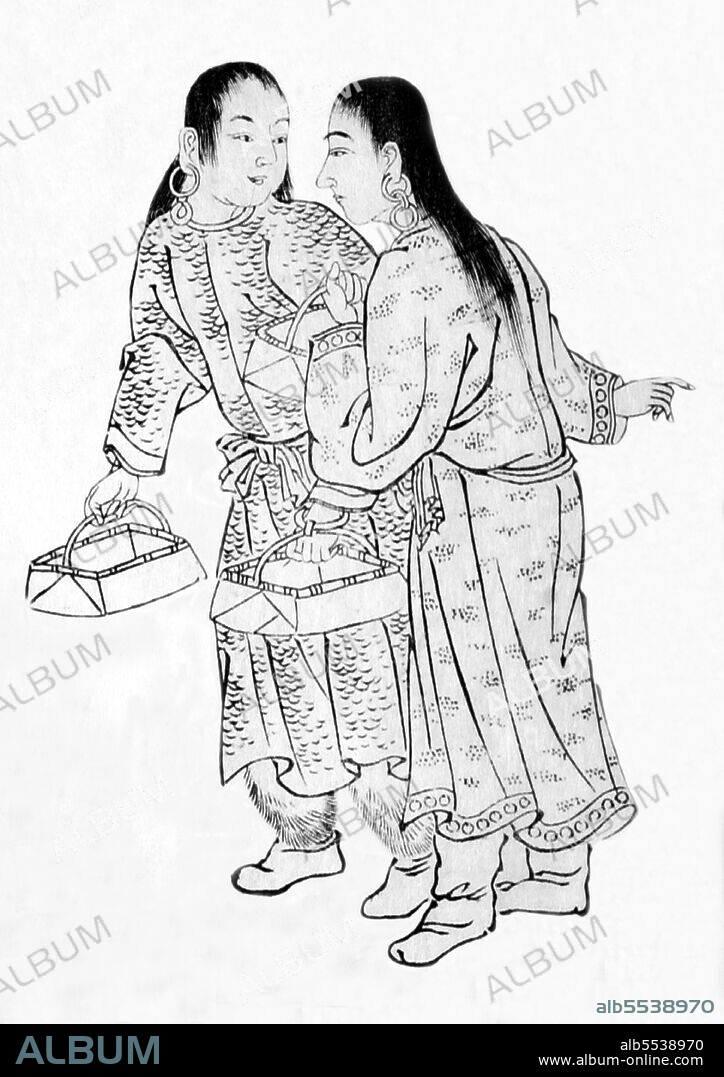alb5538970
Russia / Japan: Two Sakhalin Ainu women with small baskets. Mamiya Rinzo (1780-1844), Kita Ezo zusetsu< / i> ('An Account of The Northern Ezo' [Ainu]), Edo (Tokyo),1855

|
Añadir a otro lightbox |
|
Añadir a otro lightbox |



¿Ya tienes cuenta? Iniciar sesión
¿No tienes cuenta? Regístrate
Compra esta imagen.
Selecciona el uso:

Título:
Russia / Japan: Two Sakhalin Ainu women with small baskets. Mamiya Rinzo (1780-1844), Kita Ezo zusetsu< / i> ('An Account of The Northern Ezo' [Ainu]), Edo (Tokyo),1855
Descripción:
Ver traducción automática
Kita Ezo Zusetsu, dictated by Mamiya Rinzo (1775-1844). 4 vols, published in Tokyo, 1855. Commissioned by the Shogunte government (Bakufu), Mamiya Rinzo traveled to northern Sakhalin and established as a fact, for the first time in history, that Sakhalin was an island, not a part of the Asian continent. He produced valuable maps and geographic, topographic and climatic information of Sakhalin as well descriptions of the daily lives of the Sakhalin Ainu, Oroks, Nivkhs (also known as Gilyaks) , including their economic activities, customs, and the individuals.
Crédito:
Album / Pictures From History/Universal Images Group
Autorizaciones:
Modelo: No - Propiedad: No
¿Preguntas relacionadas con los derechos?
¿Preguntas relacionadas con los derechos?
Tamaño imagen:
3500 x 4952 px | 49.6 MB
Tamaño impresión:
29.6 x 41.9 cm | 11.7 x 16.5 in (300 dpi)
 Pinterest
Pinterest Twitter
Twitter Facebook
Facebook Copiar enlace
Copiar enlace Email
Email
